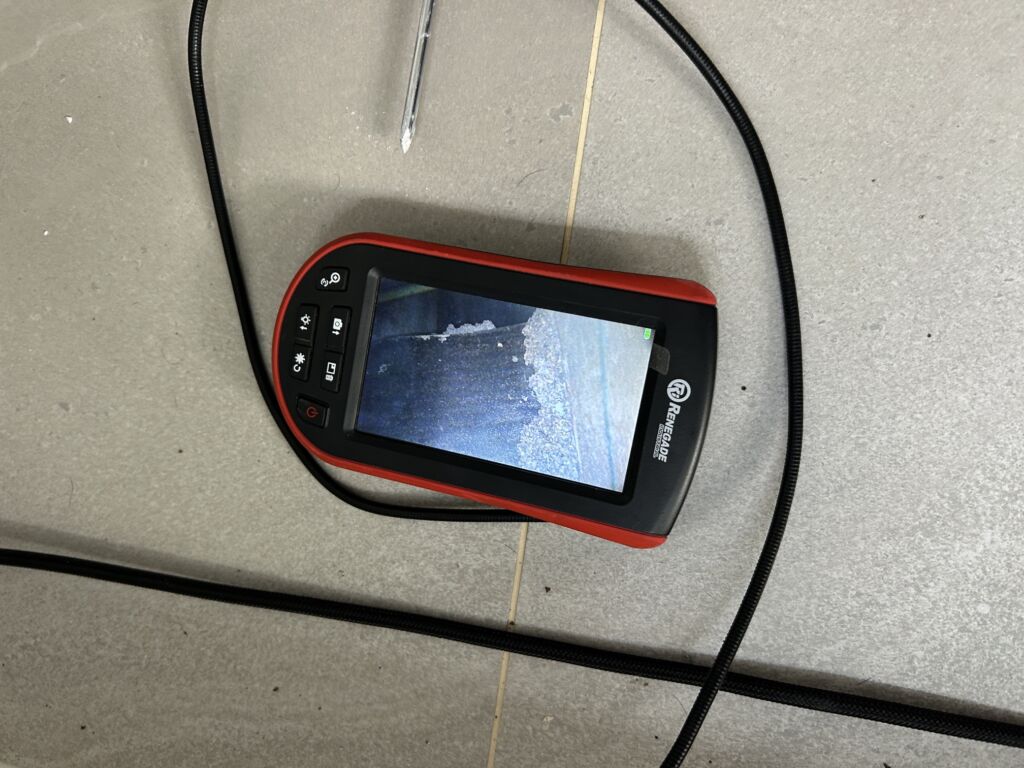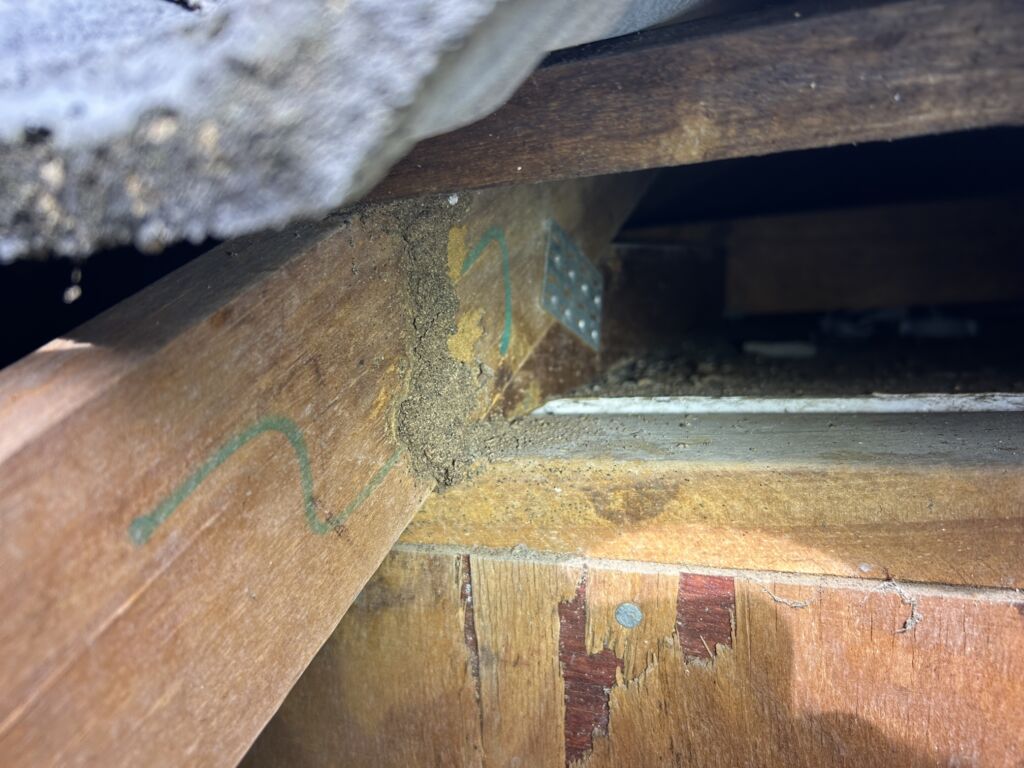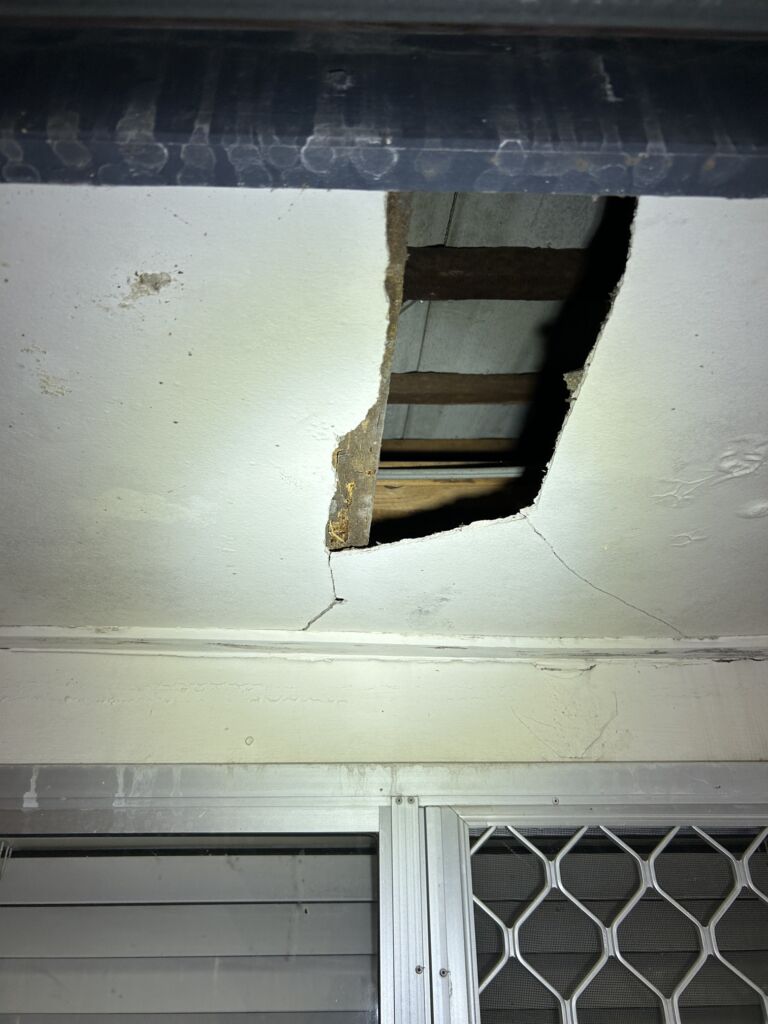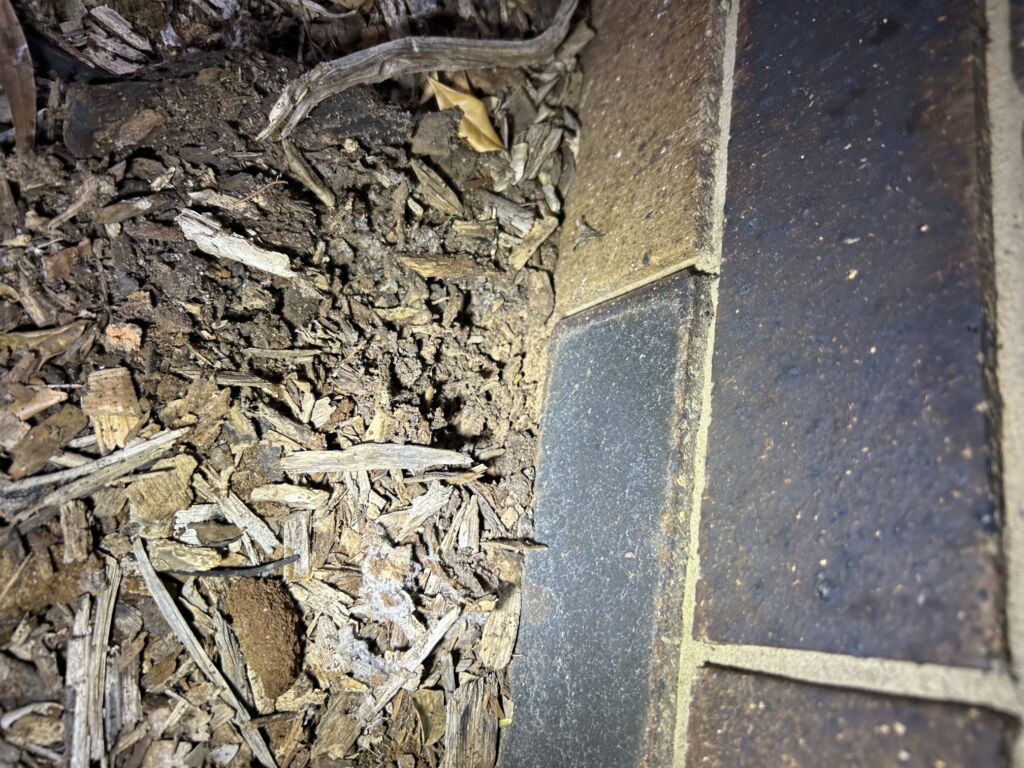Each month, we carry out a large number of termite inspections across Brisbane. It’s not uncommon for us to come across live termite activity—either within the structure of the home or in garden areas around the property. One recent job in Petrie, in Brisbane’s northern suburbs, really stood out and is worth sharing.
The customer called our office the day before the scheduled inspection, concerned about some unusual signs around a front lounge room window. We attended the following day and, during the inspection, discovered active termites both in the window frame and extending up into the roof void. The damage and level of activity were quite severe. It became clear that the termites were entering the structure from an external wall.




As is the case with many homes across Brisbane, this property had several conducive conditions for termite activity. No previous inspection had been carried out, and there was no known history of a termite management system in place. We noted excess moisture along the exterior wall, loose timber stored directly against the house, and tree stumps close to the structure—all common risk factors.
During the inspection, we used a combination of tools including a moisture meter, Termatrac, thermal imaging camera, and borescope. These are standard tools used by Allure Pest Solutions to help detect termite activity with precision. The termites identified were Schedorhinotermes, one of the most destructive termite species found in Queensland.
A treatment plan was immediately implemented. We carried out a localised treatment using a foaming termiticide. This product is highly effective against Schedorhinotermes and is designed to bring the infestation under control within a few weeks. A follow-up inspection was scheduled for two weeks later to confirm the effectiveness of the treatment.
As part of our duty of care, we also provided the homeowner with a proposal to install a full termite management system around the property to reduce the risk of future infestations. Two weeks after the initial treatment, we applied a liquid termiticide—Termidor HE—around the external perimeter of the home. This involved drilling and injecting through concrete areas, as well as trenching and flooding soil along the exterior footings.
This perimeter treatment acts as a protective barrier. Foraging termites attempting to gain entry will unknowingly pass through the treated zones. Because fipronil (the active ingredient in Termidor HE) is a non-repellent, termites can’t detect it. As a result, they carry it back to the nest and spread it throughout the colony, ultimately eliminating the entire population.
In the end, the customer was extremely relieved and happy to know their home was now protected and in safe hands.